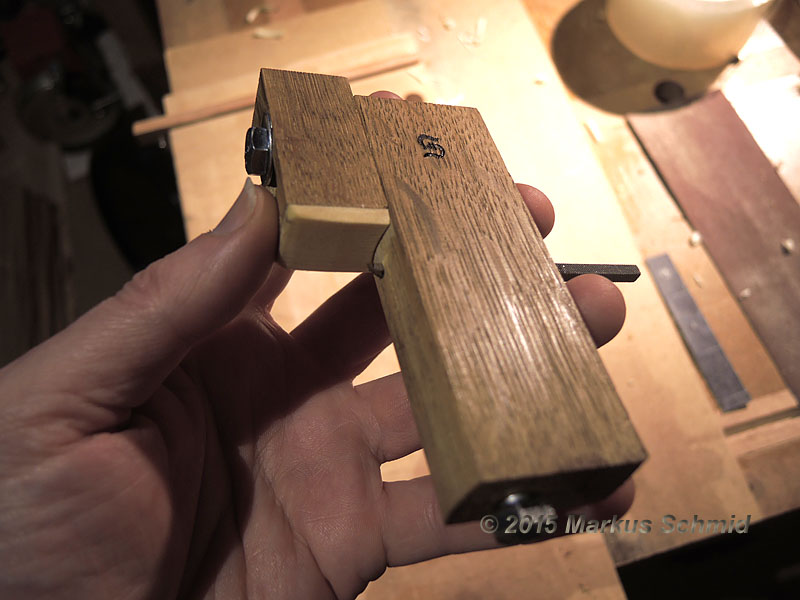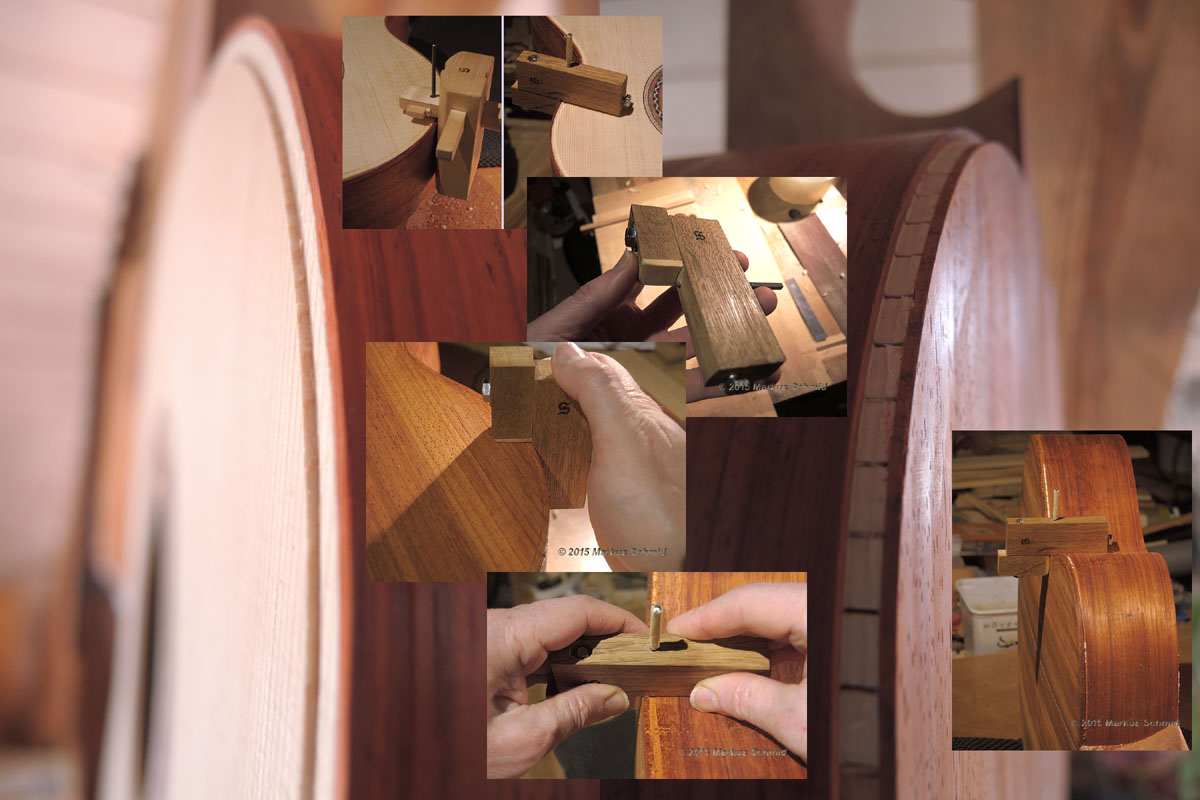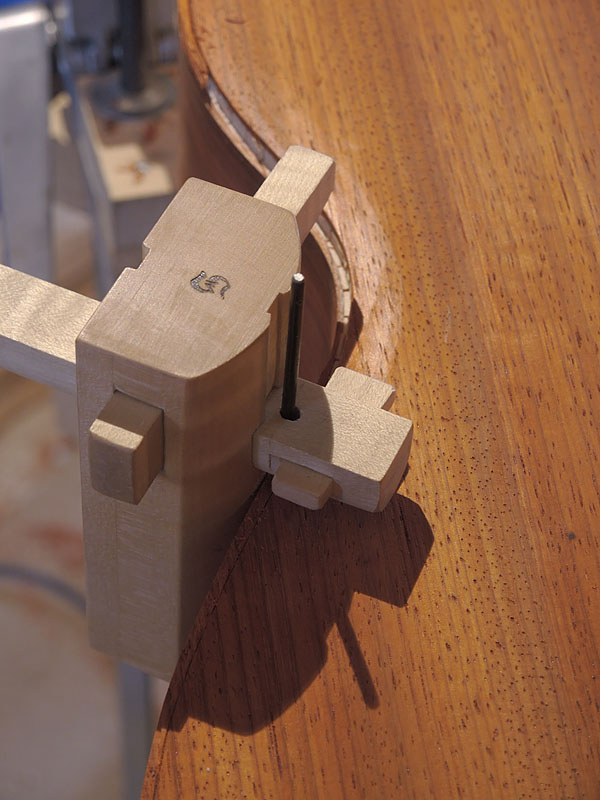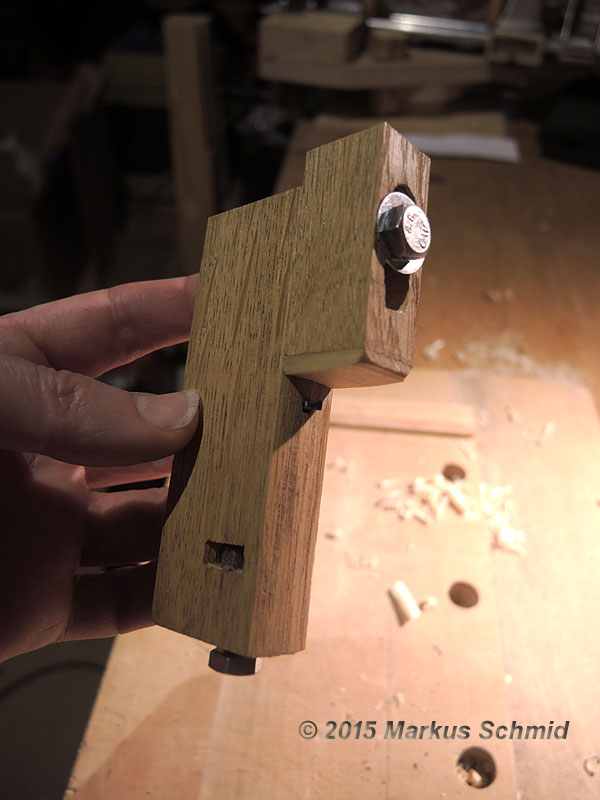Binding channel cutter
Posted: Mon Apr 06, 2015 1:15 am
There are actually two tools needed: a cutting gage and a scraping gage. Well, make it five tools if you count in a chisel, plus a knife and needle file for clean-up). Time required to cut all channels: about one hour after having gotten familiar with the process.

The chisel-shaped scraping blade can be ground from a cheap square needle file. It needs sharpening and honing, a bevel angle of about 45° works fine for me (different scraping action depending on scraping direction).
First, using the cutting gage the borders of the channel must be cut to a depth of about 0.7 to 1.0 mm. Then the scraping gage cuts the rest of the depth in the sides, respectively 1 mm deep into the top and back, right adjacent to the cuts made with the cutting gage.

Then, again using the cutting gage the rest of the remaining material in the channel gets cut away:

The narrower the scraping-chisel is, the faster the channel will be cut to its whole depth. My blade is about 2 mm wide, which is on the wide side. 1 - 1.5 mm would be better, but the blade's shaft where it gets clamped should be thicker, unless a more sophisticated clamping mechanism is made (this square blade sits in a round hole in the wood, thus gets bent when clamped, so over-clamping could be fatal for the blade).
Here's another view of the scraping tool, showing more of the blade clamping mechanism:


The chisel-shaped scraping blade can be ground from a cheap square needle file. It needs sharpening and honing, a bevel angle of about 45° works fine for me (different scraping action depending on scraping direction).
First, using the cutting gage the borders of the channel must be cut to a depth of about 0.7 to 1.0 mm. Then the scraping gage cuts the rest of the depth in the sides, respectively 1 mm deep into the top and back, right adjacent to the cuts made with the cutting gage.

Then, again using the cutting gage the rest of the remaining material in the channel gets cut away:

The narrower the scraping-chisel is, the faster the channel will be cut to its whole depth. My blade is about 2 mm wide, which is on the wide side. 1 - 1.5 mm would be better, but the blade's shaft where it gets clamped should be thicker, unless a more sophisticated clamping mechanism is made (this square blade sits in a round hole in the wood, thus gets bent when clamped, so over-clamping could be fatal for the blade).
Here's another view of the scraping tool, showing more of the blade clamping mechanism:
